I’m Mariko, a permaculturalist, sharing my thoughts on “playing, living, working and studying” from New Zealand!
Once a month,The Cake & Hoe (the garden lovers meeting )group meet at one of the member’s garden. The rules are to bring a cake or exchange seedlings or seeds. It’s a friendly garden group in Whanganui.
This time, I invited them to my home.
When I asked, “Raise your hand if you’re interested in Kiero Compost!”,
many people came together.
I also invited my friend, Izzy , a herbalist who knows a lot about wild plants.
It would be great if I can find some edible weeds on my backyard.
Take a tour around my house.
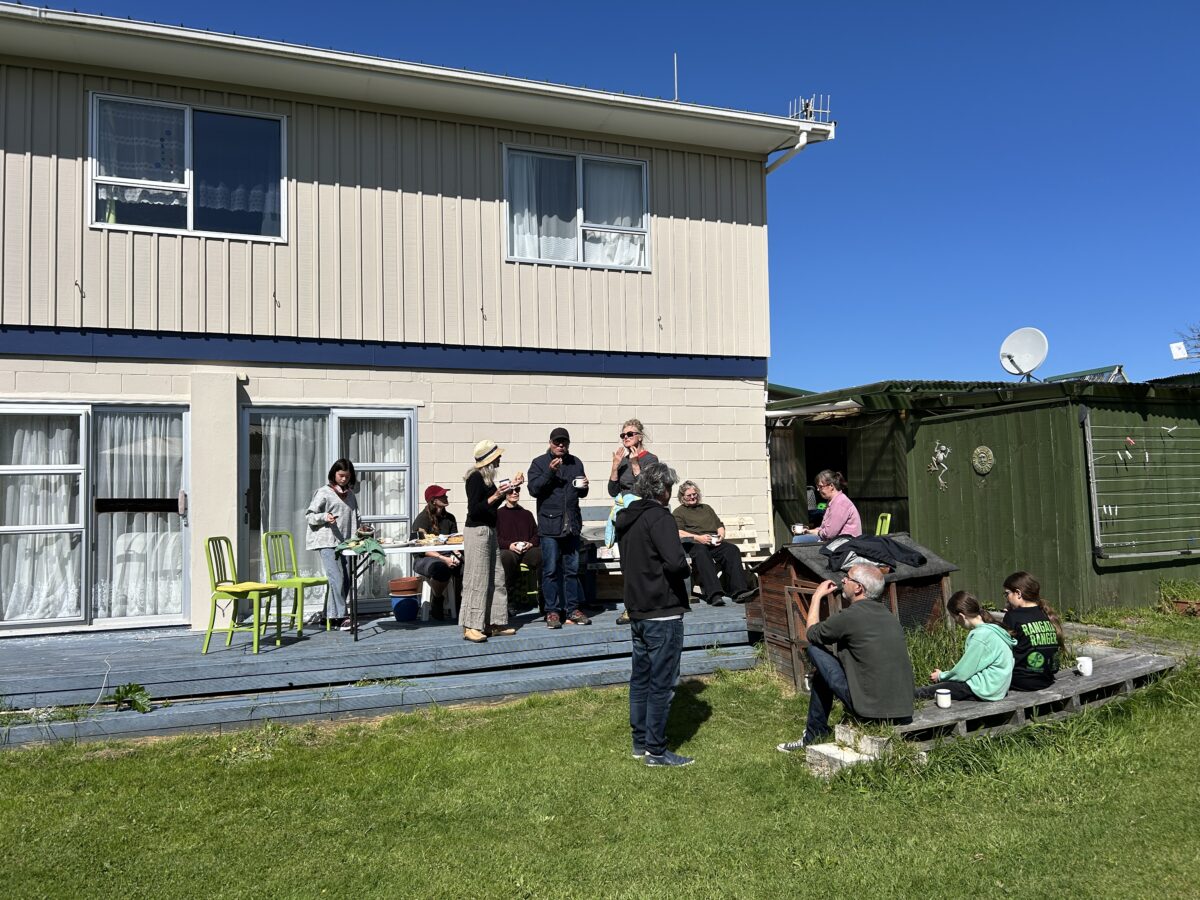
Look at this blue sky!
The meeting time was 2:00 PM. There had been rain and a storm in the morning, so I was worried whether we would be able to introduce Kiero.
The bad weather gradually cleared up to a bright, sunny day.
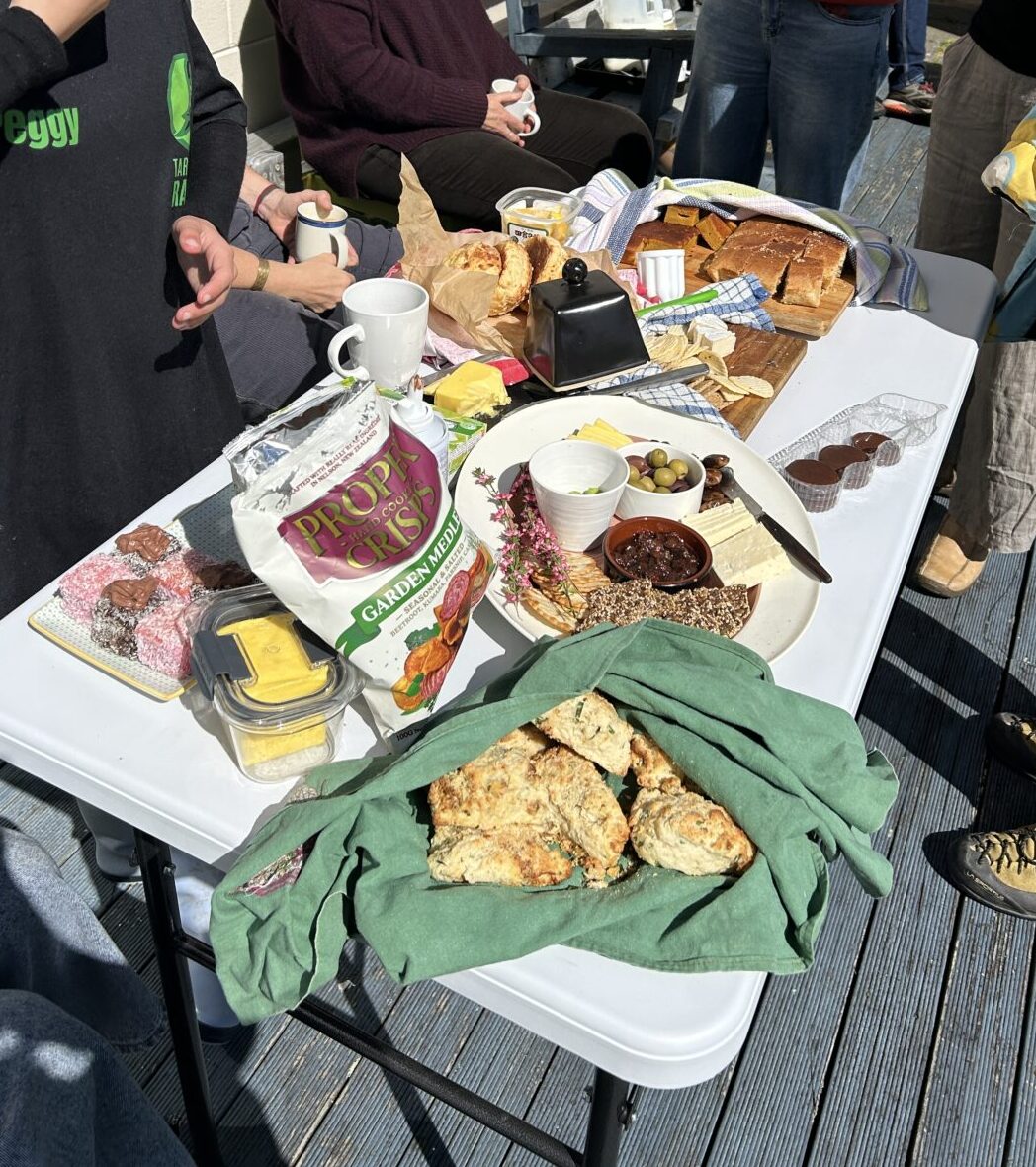
It became sunny, but the wind was strong so I had to be careful not to get blown away.
Our Permaculture Garden Tour
/https://www.instagram.com/reel/DPGb6MwE2o1/?utm_source=ig_web_copy_link&igsh=MzRlODBiNWFlZA==
この投稿をInstagramで見る
What everyone was curious about was the number of broad beans planted all over my garden!
My home is on sandy soil, so soil improvement is a must. The roots of broad beans produce nutrients that microorganisms can live on.
And the stems after harvesting are useful for improving the soil.
Best of all, it’s easy to grow.
These broad beans, much loved in permaculture are delicious to eat and also help improve the soil.
Not only that — my goal this year is to make my own miso paste. Miso is a traditional Japanese fermented soybean ingredient that we use in many everyday dishes.
I once heard a story about a friend living overseas making miso using broad beans. I thought myself:”I want to try that someday!”
However, getting good soybeans is quite difficult here, and they can be expensive.
So that’s where broad beans come in. They’re easy to grow, and if they can be turned into miso — why not plant plenty of them, right? Now the whole area is basically covered with broad bean fields!
Then we introduced the chickens we just got into our home recently.
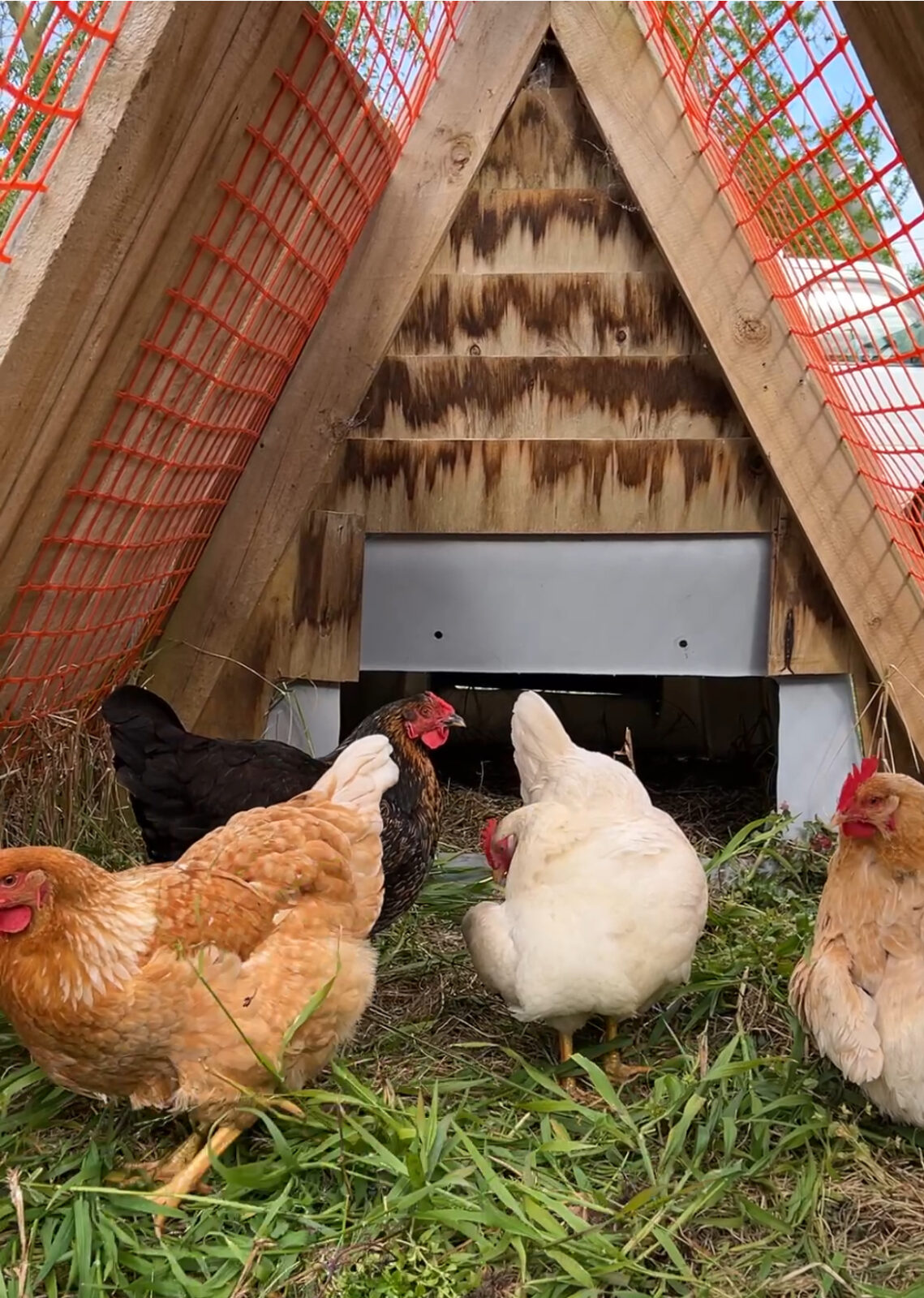
We can have 2-3 eggs a day.
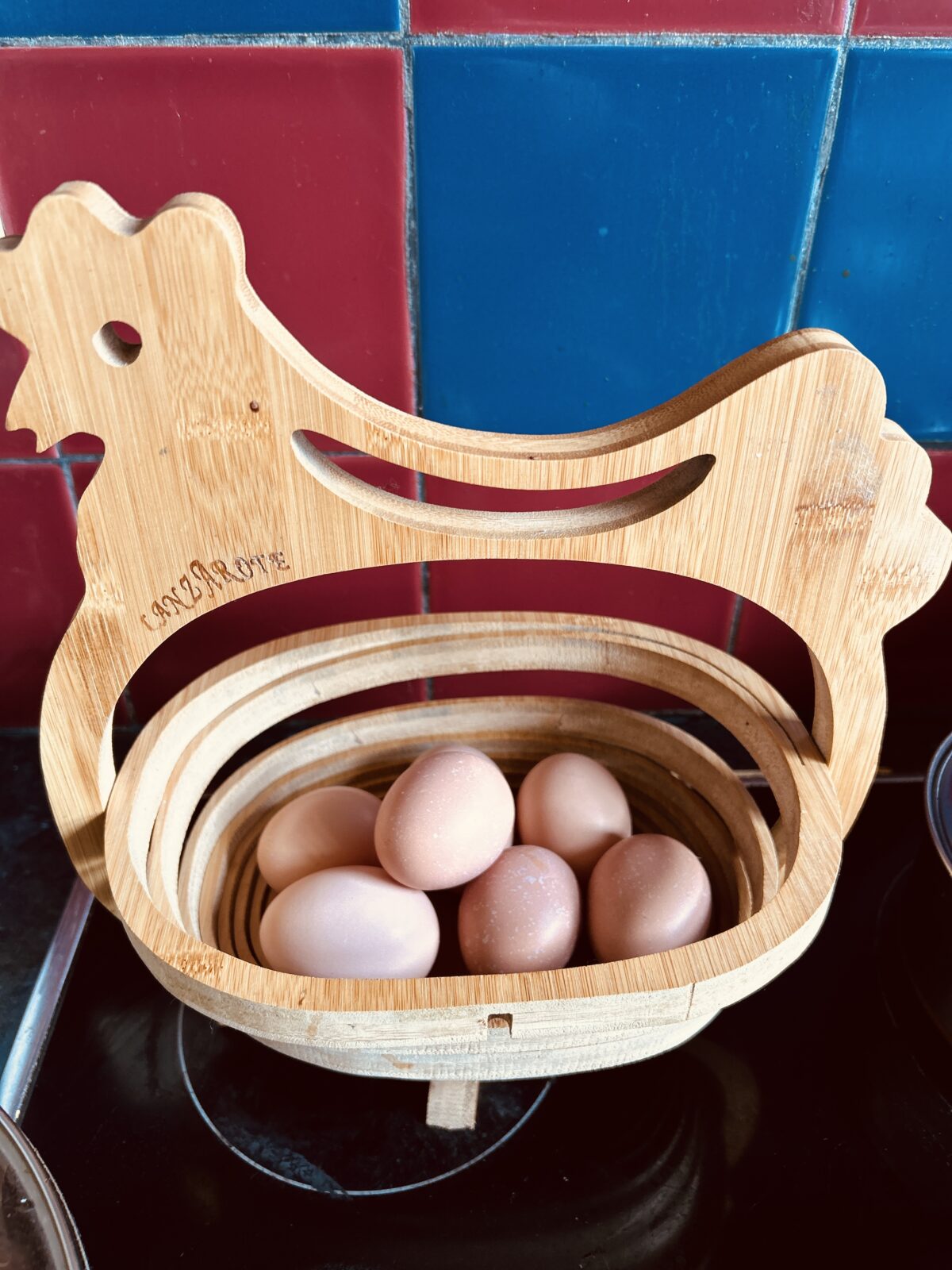
I love this second-hand chicken egg holder!
What is he doing?
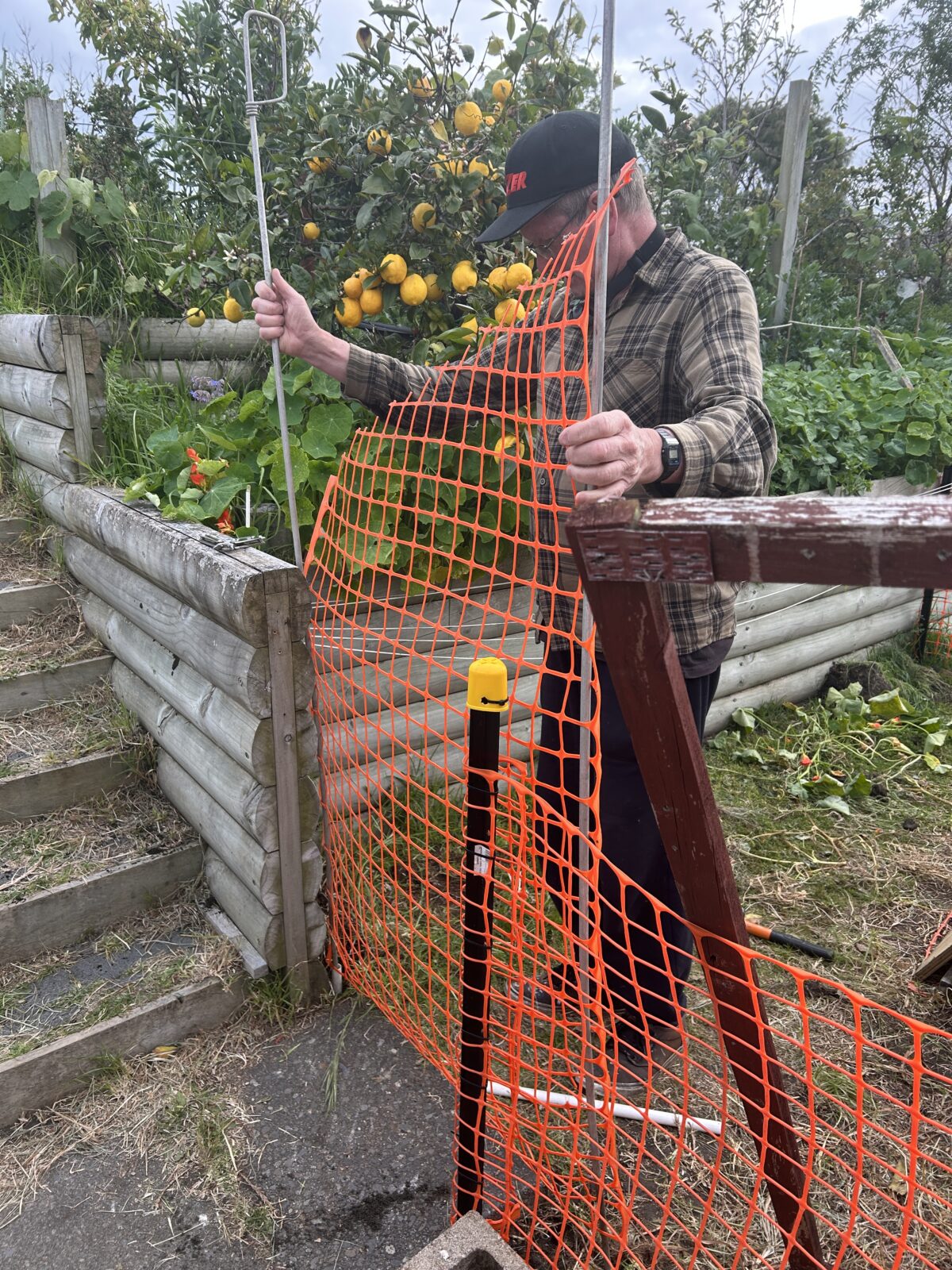
Two of my chickens managed to get over the fence and escape. Apparently , if there is a flat platform on top of the fence, chickens will jump onto it and get over the fence. so
we had to replace the gate. Jon worked so hard to build with a loose door.If it wan’t working, we need to find other way…
The rice is growing well!
I also introduced my first attempt that is growing rice.

The other day, a mouse caused some trouble, but the remaining seeds are slowly growing. I’m planning to take them to the market in November.
I’ve officially entrusted the rice-farming mission to the girls from the party — they are now Whanganui’s founding rice farmers of the future.
Amazingly, one of my friends had previously read an article about Dr. Sakurai, the owner of the original seeds.
This is the article.
stonesoupsyndicate.com

Isn’t it romantic that those special seeds are with me now?
Eventually, I’d love to grow this into a rice project for the whole Whanganui community.
Introducing Kiero de Kia ZERO!
Today’s main event: Introducing Kiero!
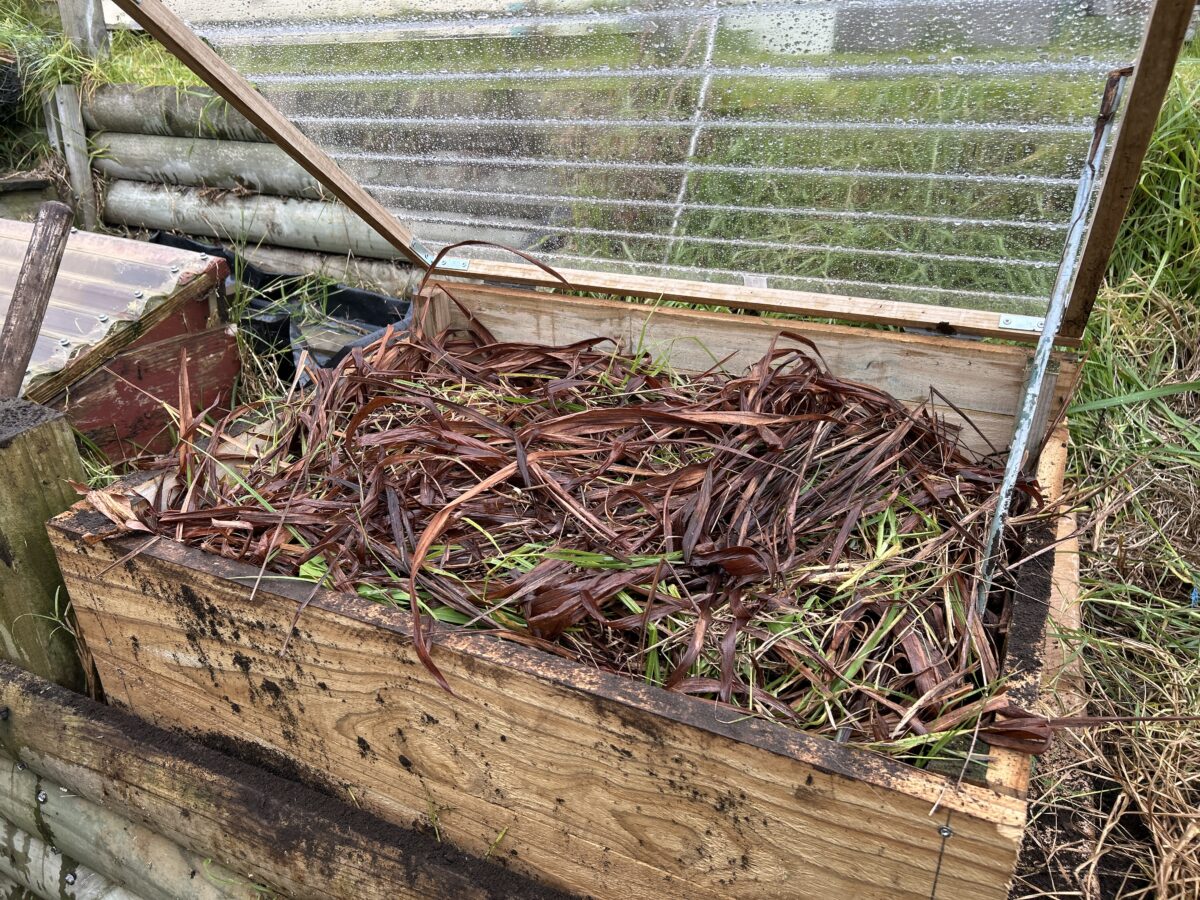
You simply add soil into the Kiero.
I think everyone found my mini workshop interesting and enjoyed it.
(I also received feedback that my presentation was good. Thank you!)
We will also be bringing Kiero to the market in November.
It will be a special price for the market. Please come and see me there.
Although I am introducing my Kiero, the truth is that we don’t really need it in our home.
Why?
- We need a lot of compost, so we actively collect food waste.
- Chickens also need protein, so they eat the fat from the meat.
- Compost waste paper and tissues
We put the following in our Kiero:
- Smelly fish and bones
- Burnt food stuck to a frying pan soaked in water
Lately it has mainly been used as a box to dry weeds to make straw for the chicken coop.
Then I realisedー
- By placing the weeds on top of the soil, the Kiero soil does not dry out too much.
- The smell of grass is nice
- There will be less worry about animals digging up the soil.
The Kiero Advisor course will start soon, and I am looking forward to seeing how this will work out for my future workshops!
After graduating from the course in April 2026, I will become an official Kiero Advisor!


